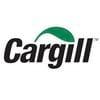I. INTRODUCTION
Clay minerals and yeast fractions are regarded as effective tools for the prevention of the negative effects of toxic compounds in animal feed and production (Kubena et al., 1990; Lillehoj et al., 2016; M’Sadeq et al., 2015; Phillips et al., 1988). Clays and yeast fractions, when added to animal feeds, can adsorb certain toxic materials in the gastrointestinal tract of the animals, reducing their bioavailability. Dietary supplementation with clays has been shown to improve weight gain and feed conversion in pigs and poultry (Almeida, 2015).
Different modes of action have been proposed with regard to these materials (Almeida, 2015), adsorption being among them (Phillips et al., 1988; Yiannikouris et al., 2004). Clays and yeast fractions can bind to mycotoxins, heavy metals and bacterial toxins, preventing the increase in intestinal permeability and cellular damage exerted by these toxins, thus improving animal health and performance (Kubena et al., 1990; Lillehoj et al., 2016; M’Sadeq et al., 2015; Phillips et al., 1988).
Damage to the intestinal mucosa caused by toxins from Clostridium perfringens - among them α-toxin - leads to decreased digestion of feeds and absorption of nutrients and, as a consequence in broilers, weight gain is reduced and feed conversion increased (Elwinger et al., 1992).
The aim of the study was to evaluate the ability of an adsorbent (ADS) composed of clay mineral, yeast cell walls and plant extracts, to bind to C. perfringens α-toxin and enhance performance of C. perfringens challenged broilers.
II. MATERIALS AND METHODS
a) In-vitro experiment: efficacy of ADS on C. perfringens α-toxin
Four buffer solutions were prepared with equal α-toxin concentrations and increasing concentrations of ADS (0, 10, 50 and 100 mg/mL). The solutions were incubated at 27°C for one hour. The mixtures were centrifuged and the supernatant of each solution was taken for measurement of toxin concentration using an antigenic sandwich ELISA kit for the detection of C. perfringens α-toxin (BioX diagnostics).
b) In-vivo experiments: effect of ADS against C. perfringens toxins in a broiler model
Experiment 1
30 birds (Ross 308, males) were individually orally challenged with 1 mL of a broth culture (108 CFU of C. perfringens) on the 3rd and 4th days of life. Of the 30 challenged birds, 15 received a diet including ADS (1 kg/ton), and 15 were used as a challenged control (CC). 15 additional birds were left unchallenged (NCC). Feed and water were provided ad libitum. The feeding programme included pre-starter and starter diets. The birds were weighed on days 1, 8 and 14 of life. The performance of the CC and ADS birds was compared with the NCC group.
Experiment 2
30 broilers (Ross 308, males) were challenged in the same way as in Experiment 1. The birds were divided into two groups, CC and ADS, which were fed and managed identically, except for the feed additive (ADS) that was supplied to the ADS birds. The feeding program included a pre-starter and starter diets. The birds were weighed on days 1, 8, 14 and 21 of life. To further evaluate the C. perfringens challenge, blood serum was collected on day 21, and analyzed for anti-α-toxin antibodies (ELISA).
III. RESULTS AND DISCUSSION
a) In-vitro experiment: efficacy of ADS on C. perfringens α-toxin binding
The in vitro experiment measured the dose response effect of increasing ADS doses (0, 10, 50 and 100 mg/ml) in solutions of 1 mg/mL C. perfringens α-toxin on adsorption of α-toxin. The dose response effect of ADS on the toxin was demonstrated with the percentage of adsorption ranging from 0% when no ADS was added to 95% at the highest dose (Table 1).
Table 1 – In-vitro adsorption of increasing levels of α-toxin by an adsorbing agent (ADS).
b) Effect of ADS against C. perfringens toxins in a broiler chicken model
In vivo Experiment 1:
The experimental design allowed for assessment of the effect of challenge on performance (CC versus NCC), and for assessment of the treatment effect in challenged birds (ADS versus CC). In this experiment, a significantly higher body weight was obtained in the ADS and NCC groups compared with CC at all measured times, and NCC and ADS had similar results (Table 2). The higher body weight in the challenged birds may have allowed them to allocate more nutrients into growth and production to achieve the performance of the NCC group. No differences in other performance parameters (mortality and FCR) were found among the three groups (data not shown).
Table 2 - Weekly Body Weight ± SD of broilers challenged with α-toxin with and without the supplementation of an adsorbent (ADS) compared with a group of non-challenged control birds (NCC).
In vivo Experiment 2
The experimental design allowed only for assessment of the treatment effect in challenged birds (ADS versus CC), as a non-challenged group was not included. Body weight of the ADS group was significantly higher from day 8 onwards (Table 3).
Table 3 - Weekly Body Weight ± SD of broilers challenged with α-toxin with and without ADS.
Anti α-toxin antibody titers were measured in the serum at 21 days of age. The ADS group had significantly lower anti α-toxin antibody titers in comparison with the control group (Figure 1), indicating that the birds may have been less affected by the challenge. Similar results were obtained by Lillehoj et al. (2016) when using a montmorillonite-based dietary supplement. They found low α-toxin antibody levels in the birds consuming the supplement compared with challenged birds (co-infection with Eimeria maxima and C. perfringens).
Figure 1 - Anti α-toxin antibody (IgG) titers in serum of broilers at 21 days of age challenged with C. perfringens and fed a diet with and without ADS (different superscripts: statistical significance P< 0.05).
IV. CONCLUSIONS
Although the adsorption of bacterial toxins by clay minerals and yeast cell walls is still a poorly understood field, the ADS showed binding activity in vitro and a positive influence on the growth performance of C. perfringens challenged broilers. More research should be conducted in order to understand the effects of ADS under C. perfringens challenges and its mechanisms of action in broilers.
Presented at the 29th Annual Australian Poultry Science Symposium 2018. For information on the latest and future editions, click here.













